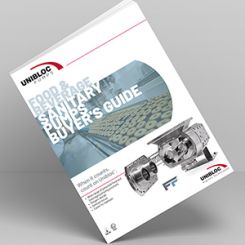A comparison of braided carbon packings to graphite fiber packings.
It is easy to confuse graphite fiber packings with carbon fiber packings. In fact, the terms carbon fiber and graphite fiber are often used interchangeably, even by packing manufacturers. Both products are used to manufacture braided packings, and they both have relatively good chemical and temperature resistant properties. But there are differences, and each has its advantages and disadvantages.
Properties of Carbon and Graphite Fibers
 Figure 1. Typical Carbon and Graphite Braided Packings.
Figure 1. Typical Carbon and Graphite Braided Packings.Typically, carbon fibers have excellent strength and toughness and are considerably less expensive to manufacture. Since carbon fiber based packings are generally tougher than graphite, they are more resistant to abrasive media. They also have the ability to handle the higher compressive loads that are required for high pressure services.
Graphite packing fibers may approach the strength of carbon, but have improved lubricity and, as such, are not so abrasive. When formed into packing that is used to seal rotating shafts, graphite can operate at higher shaft speeds with less leakage. Graphite fiber packings also have better thermal conductivity than carbon fibers, meaning they can better dissipate any frictional heat that is generated. These properties make them ideally suitable for clean media, high shaft speed services, such as boiler feed pumps.
Carbon and graphite fibers are both composed of elemental carbon, but with distinct characteristic differences. These property differences are primarily created by the raw materials from which the fibers are made, and the type and extent of thermal processing.
Historically, one major distinction is that graphite fiber typically has carbon content greater than 95 percent. Graphite fibers more closely approach the purity and properties of crystalline graphite, while carbon is far less crystalline, so is often called "amorphous." A lump of coal and a fine diamond are both made from carbon atoms, but their elemental structure is quite different. This makes them both valuable, but for different reasons.
Both graphite and carbon fibers are made from one of three precursors or raw materials: polyacrylonitrile (PAN), rayon, or petroleum pitch fibers. All three of materials are organic polymers in fiber-form that are heated, initially in air in certain cases, then ultimately to high temperatures in furnaces without air to prevent oxidation during processing. This process is called "carbonization."
After carbonization, the graphite fibers are heated again to much higher temperatures to enhance crystallinity, carbon content, and purity. These fibers, in yarn form, are then subjected to various treatments such as "sizing" or coating.
Graphite Packing Fabrication
When large numbers of fibers are combined (typically by twisting them together), they form yarns. The yarns are then braided into various forms and sizes of packing after coating with specific sizing agents, such as PTFE, that serve to aid braiding as well as enhance ultimate sealability.
A disadvantage of any fibrous yarn packing is that fibers do not totally seal fluids - they restrict flow. To provide a more effective seal, the braided carbon/graphite fiber packings are impregnated with "blocking agents," which refers to any compatible viscous lubricant that can be used to fill the voids and affect a seal between the fibers.
Blocking Agents
Historically, typical blocking agents were greases, oils and waxes. They were used to provide the necessary sealing characteristics in asbestos, cotton and flax fiber packings. Today, the most common blocking agent for carbon/graphite fiber packings is a colloidal form of PTFE. The carbon/graphite fibers are treated with the PTFE dispersant which effectively seals the voids between the fibers. It is typical to find as much as 16 percent to 25 percent PTFE in some carbon/graphite fiber packings.
PTFE is an effective blocking agent except for two pitfalls. First, when used on high-speed rotating shafts, the PTFE tends to sinter or form a hard plastic-like inner region of the packing ring where it makes contact with the shaft. This makes it difficult to impossible for gland adjustments, thereby requiring eventual replacement. Secondly, it can be responsible for acceleration of serious pitting-corrosion in pump shafts as well as valves stems.
This pitting and corrosion is most prevalent when temperatures exceed 700-deg F, where PTFE begins to decompose. Decomposition generates hydrogen fluoride (HF) gas. HF gas, when exposed to moisture, forms very corrosive hydrofluoric acid. Thus, carbon/graphite fiber packings containing PTFE blocking agents should not be applied at temperatures above the maximum recommended for PTFE.
To offset these problems other blocking agents, such as colloidal graphite, have been developed and used. Most of these do not contain any significant quantities of halogen compounds so have lesser tendency to cause pitting or stress corrosion cracking.
Summary
Graphite and carbon fiber braided packings have proven to be effective solutions to many common sealing applications. For the proper selection and installation of these packings in any application, it is always best to consult your packing manufacturer. But are there packing materials that can more effectively seal at high temperatures? If so, do they require blocking agents? These questions and others will be answered next month in part two of this article.
Next Month: What are the Benefits and Pitfalls of Graphite Packing? Part Two - Flexible Graphite Packings.
We invite your questions on sealing issues and will provide best effort answers based on FSA publications. Please direct your questions to: sealingquestions@fluidsealing.com.
Pumps & Systems, July 2007

